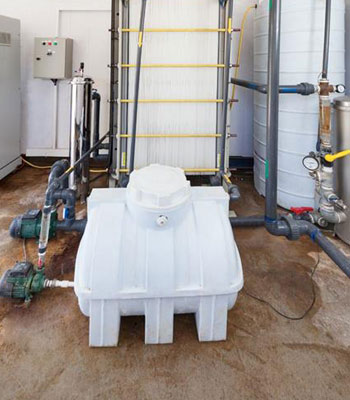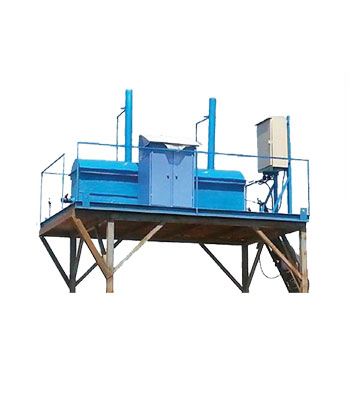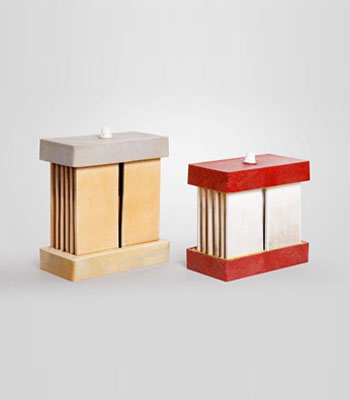Brackish water treatment system
$0.00Introduction
Desalination is considered as a common solution for the regions with shortage of fresh water resources. There are various methods for brackish and sea water desalination.
PNF Company has developed modified electro dialysis technology as an appropriate and efficient for desalination.
The developed process is an electrochemical technique in which the ionic contaminants are removed from the aqueous solution. In this method, separation of salt from water is conducted in the presence of anionic and cationic membranes under the influence of an electric field.
Brackish water treatment system
$0.00Introduction
Desalination is considered as a common solution for the regions with shortage of fresh water resources. There are various methods for brackish and sea water desalination.
PNF Company has developed modified electro dialysis technology as an appropriate and efficient for desalination.
The developed process is an electrochemical technique in which the ionic contaminants are removed from the aqueous solution. In this method, separation of salt from water is conducted in the presence of anionic and cationic membranes under the influence of an electric field.
Brackish water treatment system
$0.00Introduction
Desalination is considered as a common solution for the regions with shortage of fresh water resources. There are various methods for brackish and sea water desalination.
PNF Company has developed modified electro dialysis technology as an appropriate and efficient for desalination.
The developed process is an electrochemical technique in which the ionic contaminants are removed from the aqueous solution. In this method, separation of salt from water is conducted in the presence of anionic and cationic membranes under the influence of an electric field.
Colored Wastewater Treatment Apparatus using Nanostructured Electrodes
$0.00Introduction
This device is a colored wastewater treatment apparatus using nanostructured graphite electrodes which operates based on electrolysis process. These electrodes are produced by cold plasma method. Carbon compounds, especially graphite, have great properties which make them interesting for utilization as a cathode electrode. Using different types of modification methods in different systems make colored compounds, p-nitrophenol contaminants, azo dyes elimination and hydrogen peroxide production possible. Among electrode modification methods, plasma- based methods are generally cheap, clean and easy, which require less time. In order to purify the wastewater, firstly the carbon electrodes are modified by the plasma process to increase specific surface area and H2O2 production on the surface of the electrodes and then, modified electrodes are used as a cathode for electrolysis of wastewater.
Colored Wastewater Treatment Apparatus using Nanostructured Electrodes
$0.00Introduction
This device is a colored wastewater treatment apparatus using nanostructured graphite electrodes which operates based on electrolysis process. These electrodes are produced by cold plasma method. Carbon compounds, especially graphite, have great properties which make them interesting for utilization as a cathode electrode. Using different types of modification methods in different systems make colored compounds, p-nitrophenol contaminants, azo dyes elimination and hydrogen peroxide production possible. Among electrode modification methods, plasma- based methods are generally cheap, clean and easy, which require less time. In order to purify the wastewater, firstly the carbon electrodes are modified by the plasma process to increase specific surface area and H2O2 production on the surface of the electrodes and then, modified electrodes are used as a cathode for electrolysis of wastewater.
Colored Wastewater Treatment Apparatus using Nanostructured Electrodes
$0.00Introduction
This device is a colored wastewater treatment apparatus using nanostructured graphite electrodes which operates based on electrolysis process. These electrodes are produced by cold plasma method. Carbon compounds, especially graphite, have great properties which make them interesting for utilization as a cathode electrode. Using different types of modification methods in different systems make colored compounds, p-nitrophenol contaminants, azo dyes elimination and hydrogen peroxide production possible. Among electrode modification methods, plasma- based methods are generally cheap, clean and easy, which require less time. In order to purify the wastewater, firstly the carbon electrodes are modified by the plasma process to increase specific surface area and H2O2 production on the surface of the electrodes and then, modified electrodes are used as a cathode for electrolysis of wastewater.
DPSN gray water treatment systems
$0.00Introduction
In DPSN gray water treatment systems, gray water is treated using multichannel platelet nanostructure ceramic membranes in a hybrid membrane process. Pore size of the applied ceramic membranes are engineered in nanometric scale to obtain high quality water for recycling in industrial applications, washing in domestic applications and agriculture consumptions. The used ceramic membranes in these systems are guaranteed for long times (5-10 years) with low fouling problems by applying intervallic back washing services.
DPSN gray water treatment systems
$0.00Introduction
In DPSN gray water treatment systems, gray water is treated using multichannel platelet nanostructure ceramic membranes in a hybrid membrane process. Pore size of the applied ceramic membranes are engineered in nanometric scale to obtain high quality water for recycling in industrial applications, washing in domestic applications and agriculture consumptions. The used ceramic membranes in these systems are guaranteed for long times (5-10 years) with low fouling problems by applying intervallic back washing services.
DPSN gray water treatment systems
$0.00Introduction
In DPSN gray water treatment systems, gray water is treated using multichannel platelet nanostructure ceramic membranes in a hybrid membrane process. Pore size of the applied ceramic membranes are engineered in nanometric scale to obtain high quality water for recycling in industrial applications, washing in domestic applications and agriculture consumptions. The used ceramic membranes in these systems are guaranteed for long times (5-10 years) with low fouling problems by applying intervallic back washing services.








